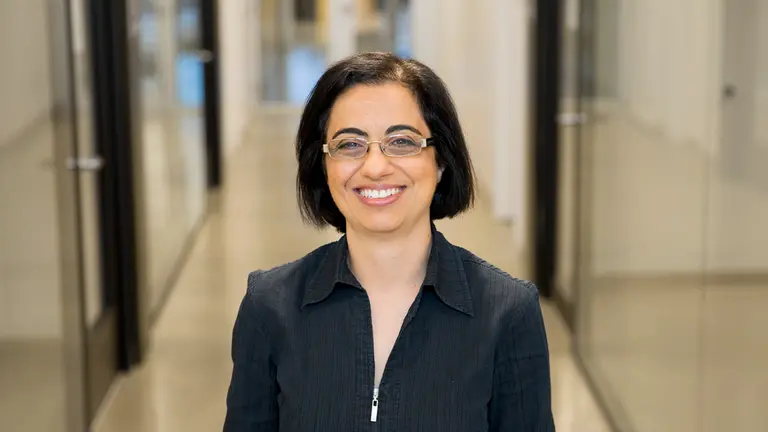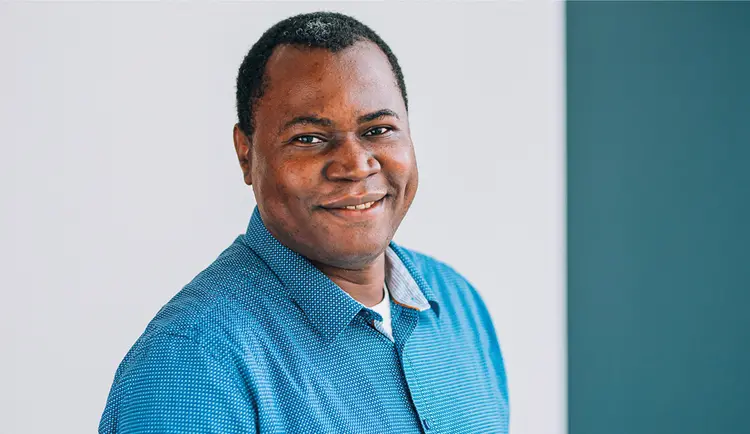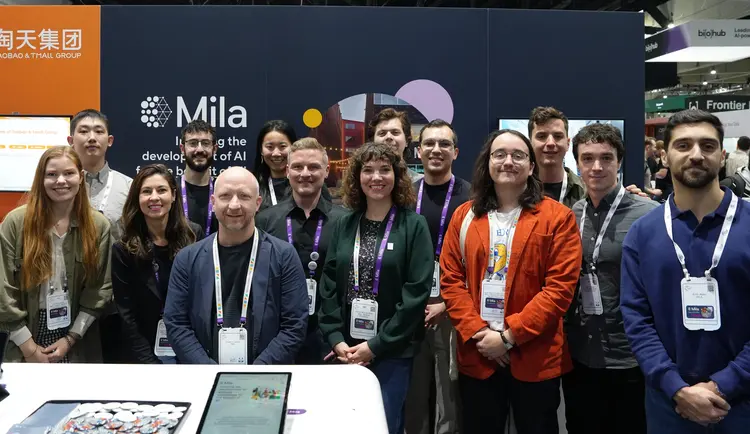
As Professor Yoshua Bengio’s first doctoral student back in the early 1990s, Joumana Ghosn is now the Senior Director of Mila’s applied research team and a member of the Institute’s management team. We spoke with Joumana—a trailblazer in machine learning—who puts her expertise and know-how in artificial intelligence (AI) to work for businesses.
How did your journey in machine learning begin?
Joumana Ghosn: I met Yoshua when I was a master’s student in computer science at the University of Montreal, just as he was starting his teaching career. At the time, I was focusing primarily on computer vision and he proposed a project that would essentially lead me to branch out into machine learning. I then pivoted to the PhD program under his supervision. There were three of us in his lab, and I was the very first woman on the team. Very few women worked in computer science at the time. There were a handful of us during my undergraduate years, but I never felt subscribed to gender bias or that I was being held back. Yoshua has always been a fundamentally fair and respectful person. That’s why I still work with him today!
How do you view the current landscape for women in tech and AI?
JG: There is still much work needed to attract more women to the field. We were very few women right from the start of my career, both in research labs and at the companies I worked for. I once worked for a startup where we were at most four women out of the fifteen or so employees. I then became a manager at the tech company Nuance, but I only managed men.
Now within Mila’s applied research team, we’ve managed to recruit a few women, but to be honest, there are still challenges. Our team still gets surprised when we receive a CV from a female AI scientist. I'm definitely seeing progress, but I must admit that it’s slow.
This is also true for management positions. I think the technology sector has evolved in this regard: we are seeing more and more women in management and leadership positions within companies and organizations. However, there is still work to do to extend female leadership roles in scientific teams.
The findings on the low representation of women in AI and research have been the same for several years. What are the possible solutions to bridge this gap and attract more women to careers in these fields, in your view?
JG: I see two challenges: education of our young girls and women's risk-taking and assertiveness in the workplace.
As part of my duties, I have been called to participate in career fairs over the past years. I noticed that while few girls were interested in the pure sciences booth, the human sciences booths and health sciences booths were very popular among them. Computer science and technology have been associated with sectors in which men could be empowered, entrepreneurial and grow, but it’s just as true for women. We have work to do to educate our young girls who might want this career path to see the possibilities for themselves
Finally, I believe that women must have confidence in their abilities to advance within an organization. When I look back on my career, I have been fortunate enough to hold management positions that interested me and suited my abilities. I realize, however, that I never sought my promotions. They came my way and I was happy with them, but I realize that I could have been more assertive. I believe that many women have the same reflex as me and are reluctant to talk about their ambitions and wait for opportunities to be offered to them. We need to teach women to take more calculated risks, to put themselves forward professionally. Fighting for the best job opportunities and conditions is a value that is instilled in men very early on. We should do the same for women.





